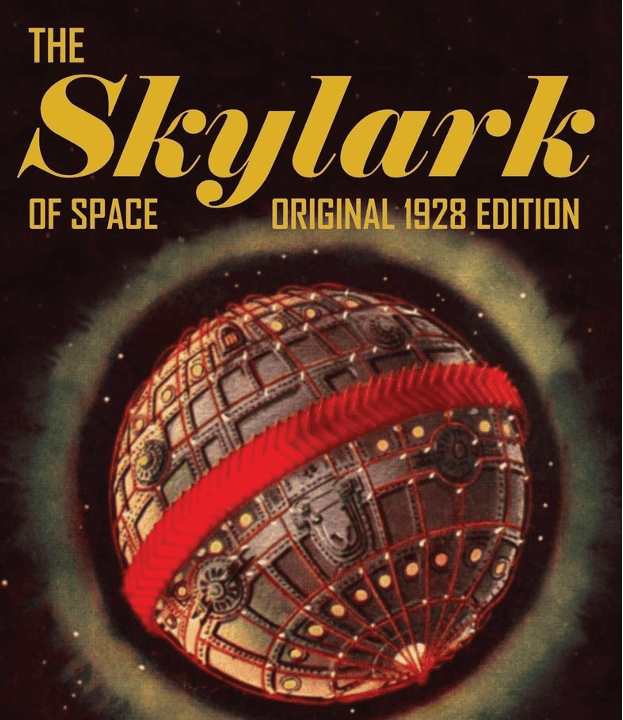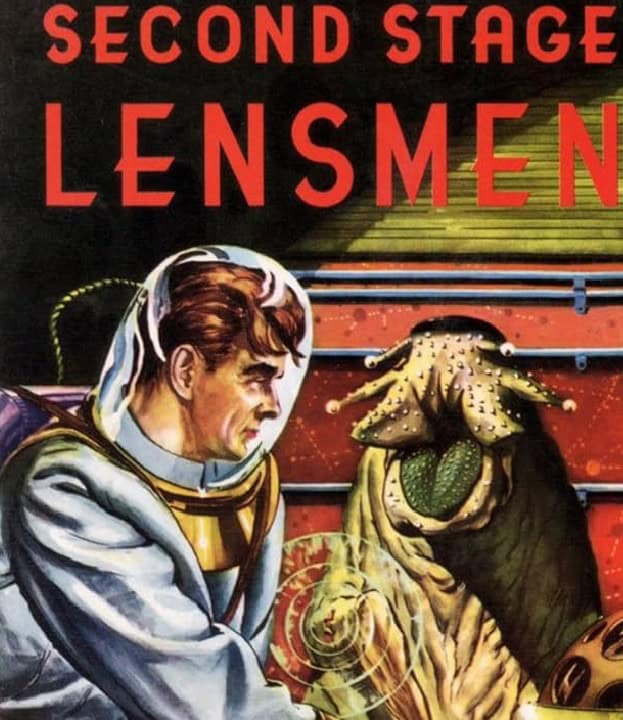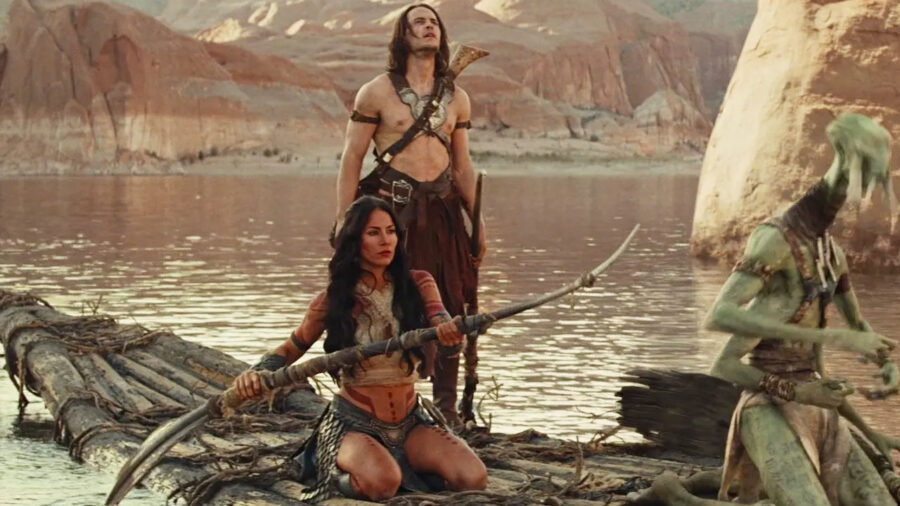The Forgotten Sci-Fi Master Hollywood Has Never Touched

Hollywood was built on adaptations, including Gone with the Wind and Wizard of Oz, and in the last few decades, it feels like every single Philip K. Dick sci-fi novel has made it to the screen. It’s hard to bring sci-fi novels to life, which is why the studios favor Dick’s works, which eschew the classic space opera style for a more grounded, psychological take on technology. Budgetary concerns have to be one of the largest reasons why the works of E.E. Doc Smith, the father of the space opera and, at one point, the most famous sci-fi novelist in America, have never been adapted. If you’ve never heard of Smith or read any of his novels, you’ve at least seen other projects that have been heavily influenced by his novels, including Babylon 5 and Star Wars.
E.E. Doc Smith was born in Wisconsin in 1890 and became a chemical engineer in 1915 when a late-night discussion with a college friend about space travel planted the seed for what would become one of the greatest, most influential writing careers in history. Smith and his wife, Jeanne MacDougall, were hosting Carl and Lee Garby when Carl tried to convince his friend to start writing down his fantastical thoughts about space travel. Smith loved the science aspects but knew a successful story needed to include romance, which he thought he was woefully inadequate to provide.
Lee Garby volunteered to write the romantic dialogue, forming a partnership that resulted in the famous Skylark series, which would, eventually, create the sci-fi genre we now know as “space opera.
The Skylark Of Space

The Skylark of Space now reads like one series of sci-fi cliches after another, but that’s because E.E. Doc Smith invented these tropes. Or rather, Smith and Garby took the classic tropes of Westerns and put them against an interstellar sci-fi background, swapping out six-shooters and horses for massive galactic empires using lasers and spaceships. Rival scientists and their romantic partners provide the character drama while a war between competing factions on the planet Osnome plays out.
Serialized in Amazing Stories, beginning in 1928, The Skylark of Space was tossed aside by the serious literary critics of the day, but it immediately found a fanbase. It’s often said that artists are not appreciated in their lifetime, but E.E. Doc Smith became an overnight sensation, then the sequel, Skylark Three, released in 1930, would include one of the most influential scenes in sci-fi history: the attack on a Mardonalian fortress. Writing on his own, without Garby’s assistance for dialogue, Smith penned the first epic space battle and earned the admiration of titans of science fiction, including Arthur C. Clarke and Robert Heinlen (the father of military science-fiction).
The Lensmen

After defining space opera with the Skylark series, E.E. Doc Smith’s follow-up was, as he himself described, “a galactic cop series.” For fans of DC comics, this series may sound familiar, as the Lensman is about the highly-evolved Arisian race establishing the Galactic Patrol, formed from species that were selectively bred for generations, including humans, that can utilize the Lens. This special device bestows superior mental abilities to its wielder. If that sounds like the Green Lantern Corps, you’re right.
Bigger and bolder than Skylark, The Lensman novels became epic in scope, covering billions of years, and cemented E.E. Doc Smith’s place among the pantheon of science fiction trailblazers. Smith even wrote side stories set in the same universe, published as The Vortex Blaster, that had no bearing on the main plot line, following a failed Lensman, the genius Neal Cloud, as he uses his intellect to mathematically deduce how to blow up vortexes, and along the way, deal with gangsters and mob bosses on alien planets.
The Lack Of Hollywood Adaptations
E.E. Doc Smith was a superstar writer in his later years, even attending as many science-fiction conventions as he could, and helped influence your favorite writers, so why has Hollywood never adapted the Skylark or Lensman series? It could be that the first wave of science fiction influenced by Smith’s novels has, in turn, become so popular as to make the original stories seem derivative. The Skylark novels, in particular, sound like the plots of Star Trek: The Original Series, while the Lensman novels, again, sound like Green Lantern.
It’s why the early steampunk novels from Michael Moorcock’s Warlord of the Air (published in 1971) and Keith Laumer’s ground-breaking Worlds of the Imperium (from 1962) haven’t been adapted, but instead, we get Mortal Engines and Hugo. The pulp novels of Doc Savage never got a movie, but Indiana Jones became a blockbuster franchise. When a work is so influential that it creates a sea of homages, parodies, and, in this case, an entire genre of literature and film, it becomes lost in the process.
From superstar to forgotten, E.E. Doc Smith is still regarded as a legend by hardcore science fiction fans, but in pop culture, he’s been superseded by Philip K. Dick, Arthur C. Clark, and Isaac Asimov, among others. Even his friend, Robert Heinlein, another ground-breaking writer, has been largely ignored by Hollywood; though Starship Troopers is a cult classic, we’re getting a Warhammer 40k adaptation, while Number of the Beast has been in publication since 1980, and though multiverses are hot now, it’s never been adapted.

If Hollywood tries to adapt E.E. Doc Smith’s stories, it’s likely they’d meet the same fate as adaptations of the work of Edgar Rice Burroughs, the man who created Tarzan and also wrote John Carter of Mars. Disney adapted one of the greatest sci-fi novels of the 20th Century, as the maligned John Carter, starring Taylor Kitsch, which became the largest box office bomb in history until Joker: Folie a Deux took the crown. Disney didn’t know how to market the film and butchered the original story by trying to cover and underplay the fantastical sci-fi elements of the story.
Fans of science fiction are used to poor adaptations that miss the point of the original story, which is the most likely outcome of any big-budget Skylark adaptation. The closest we ever got to E.E. Doc Smith coming to the screen came thanks to J. Michael Straczynski, who tried to adapt the Lensman novels. After nearly a decade of working on the project, it was abandoned due to budget issues with bringing the space opera epic to life.
George R.R. Martin, when he first wrote Game of Thrones and kicked off A Song of Fire and Ice, said that he wanted the novel to be “unfilmable.” E.E. Doc Smith never said that, but his stories are so grand in scope, spanning billions of years, multiple planets, including the extreme opposites of military armadas engaged in epic battles and married couples discussing the fabric of reality within their personal spacecraft, that Hollywood could never do them justice.
E.E. Doc Smith was a visionary, a gifted creative talent whose vision can only truly be realized in one place: your imagination.













Login with Google